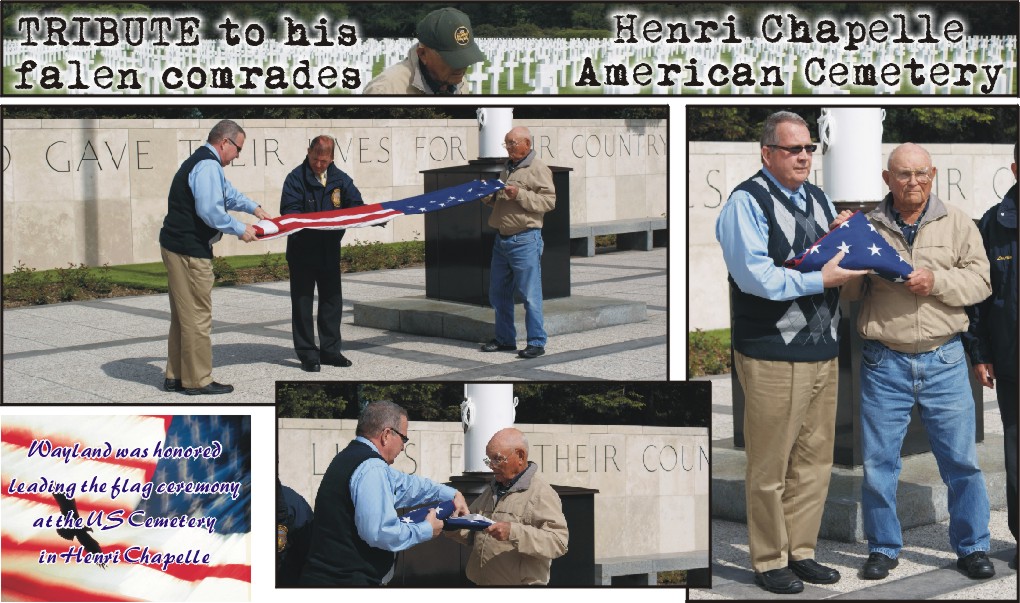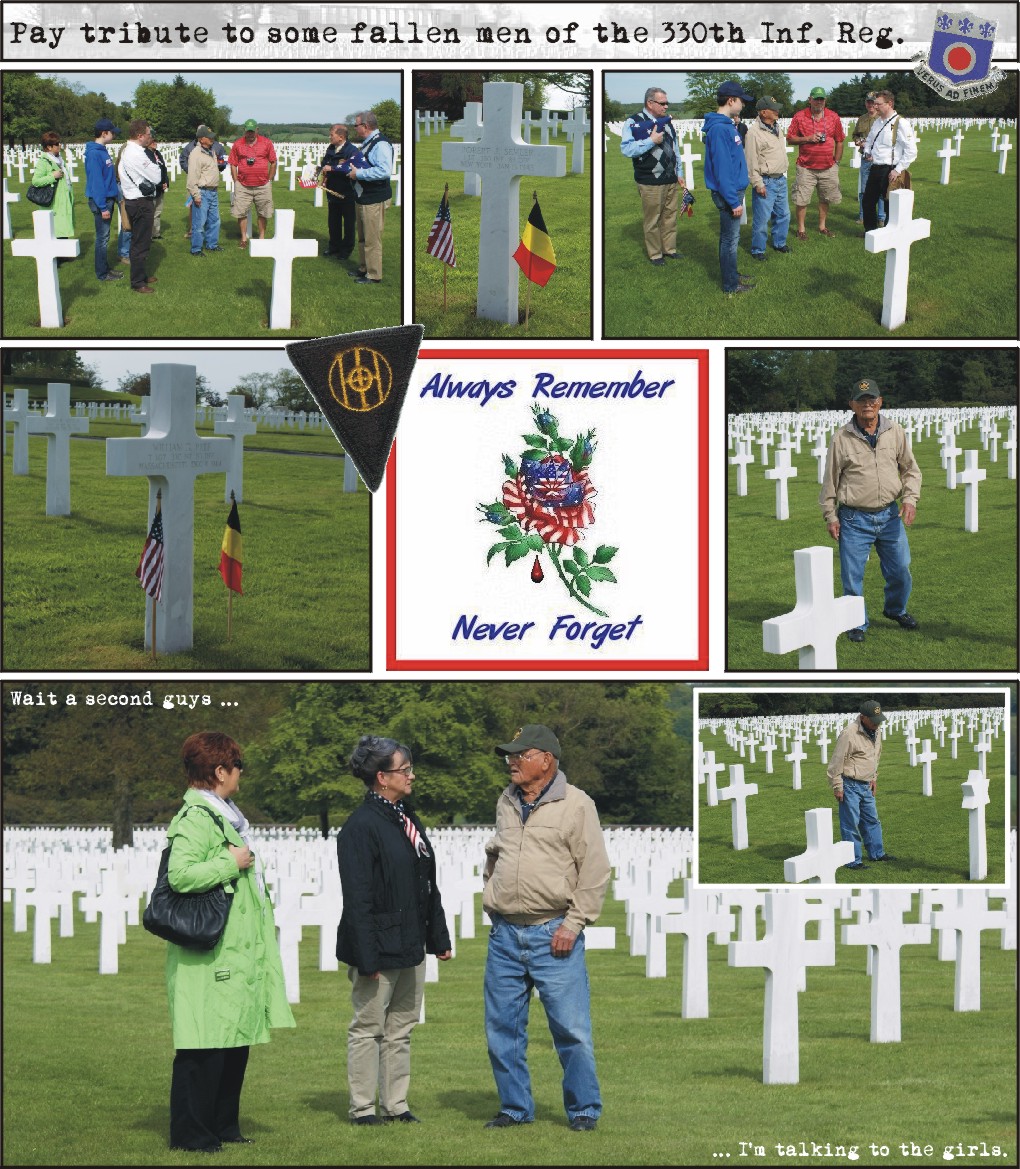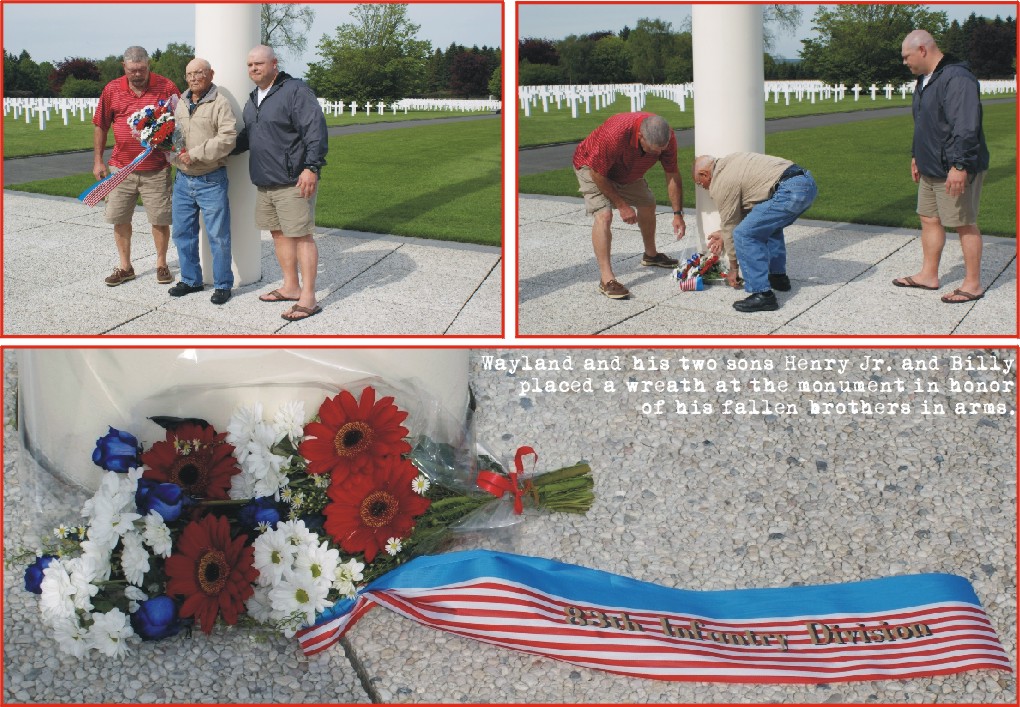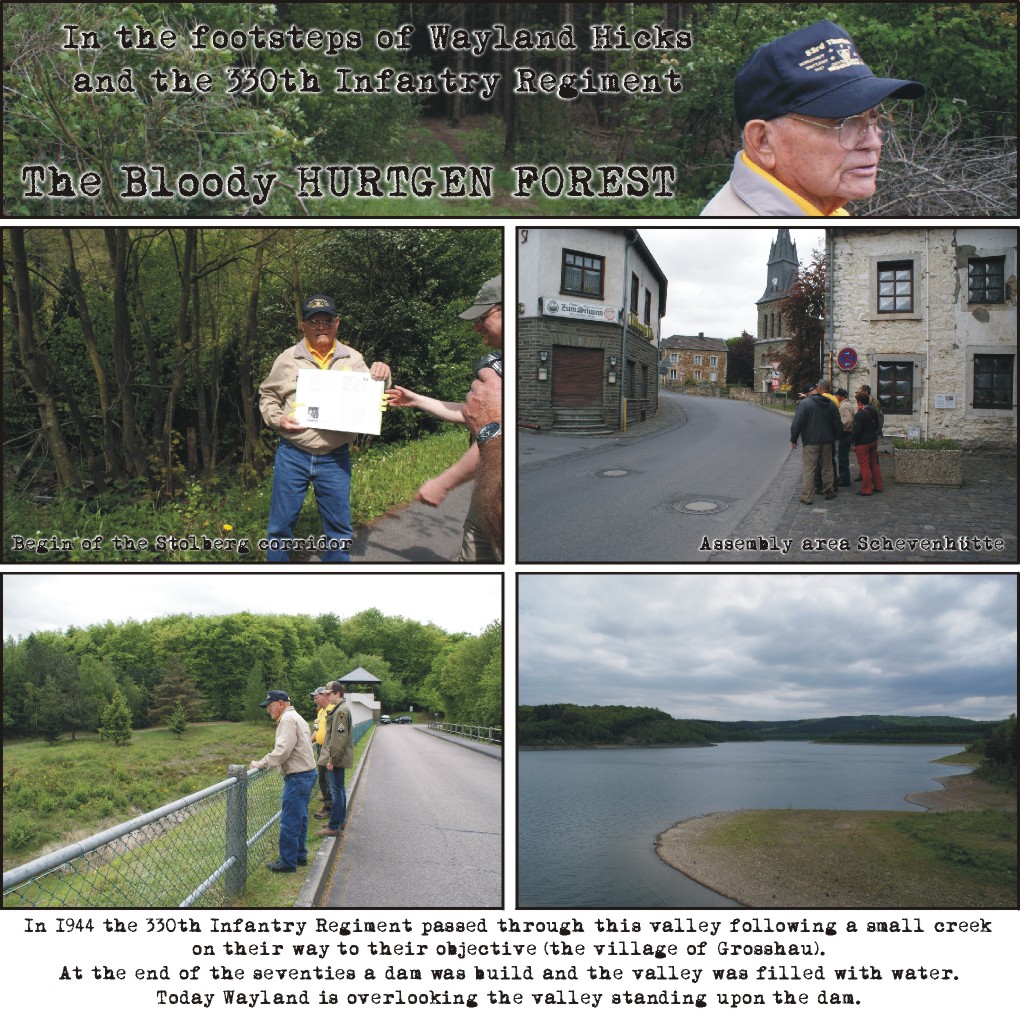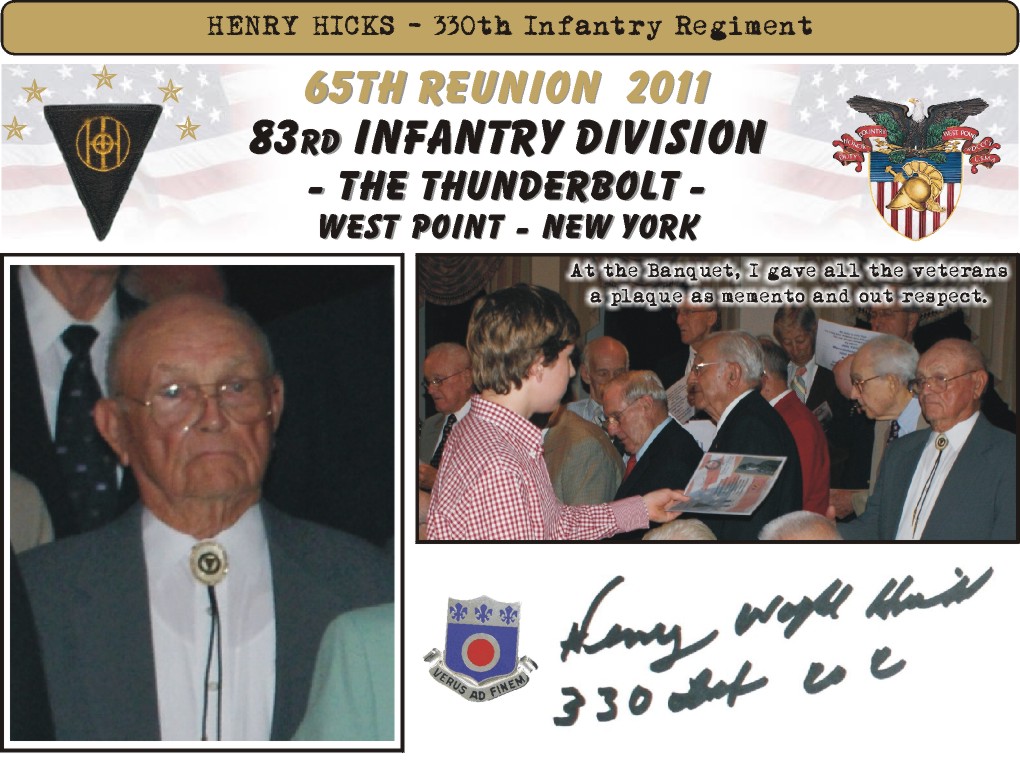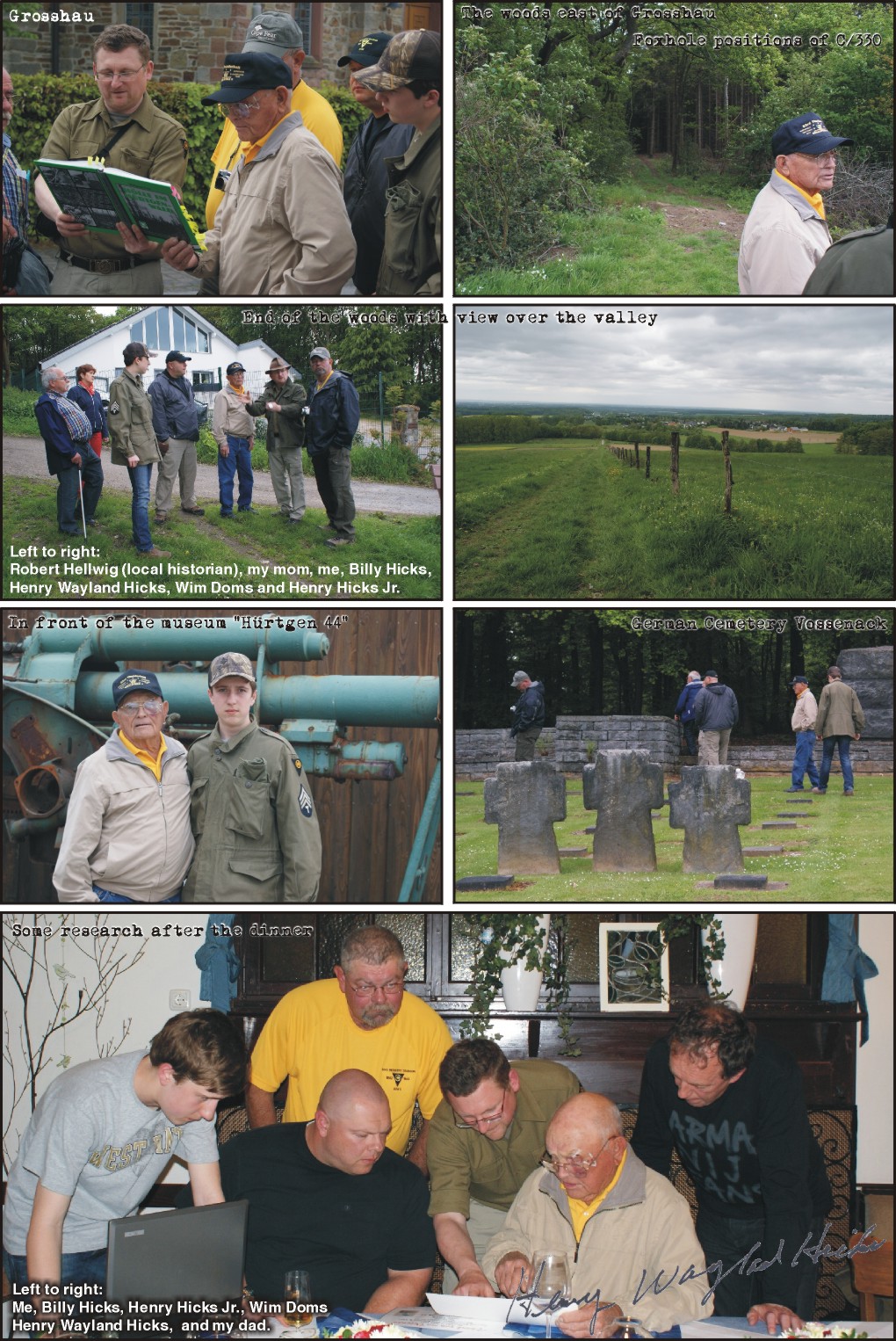IN THE FOOTSTEPS OF HENRY WAYLAND HICKS
I met Henry Wayland Hicks for the second time on May 18 and 19, 2012, while the Hicks family came over from the US to step in Wayland's footsteps. Wayland Hicks and his two sons, Henry Jr. and Billy, visited a part of Wayland's former battelfields. We had the honor and pleasure to meet the Hicks family at the American Cemetery and Memorial in Henri Chapelle, Belgium. The next day we followed Wayland's footsteps through the Bloody Huertgen Forest. We visited the Stolberg corridor, which was taken by the 330th Infantry Regiment, in December 1944. We visited the 330th Assembly Area at Schevenhütte and followed the exact road of the 330th towards Grosshau. There we visited the positions east of Grosshau focusing on C-Company. When we arrived at the edge of the woods Wayland got out of the car and told us that approximately 50 yards from where we were there was a little road going into the woods and about a 100 yards down that road there would be a bomb crater. All of this was correct and everybody was just astonished by what details he remembered of a place he last visited over 65 years ago. When he we were about to go down the road Henry stopped for a moment and looked at the fields in front of the road's exit. He pointed at them and told us that the dead were carried out the woods and piled up in the field in front of the road.
After that we visited:
- The Museum "Hürtgenwald 1944 und im Frieden". This museum with many documents, pictures and military relics all found in the Hürtgen Forest after the war, will tell you the most unpleasant part of the Hürtgen Forest history. The battle of the Huertgen Forest between September 1944 and February 1945. 70.000 young soldiers lost their future.
- The German Cemetery of Vossenack. The Vossenack cemetery (Kriegsgräberstätte) was constructed on a strategic site,Hill 470,by the “German War Graves Commission” during the years 1949 to 1952. Today the cemetery contains the graves of 2,347 war Dead. Among those are 35 men who lost their lives during post-war operations as members of a Ammunition Search and Removal Team. One of the graves is of Fieldmarshall Walter Model, together with another soldier.
Since 21 May 2005 a monument a the entrance to the cemetery commemorates Julius Erasmus, a German Engineer Captain who -mostly under risking his life- recovered 1569 sets of remains of his former comrades from Hürtgen Forest battlefields and personally buried them on this hill.
- The Hospital Bunker of Simonskall. This is an original hospital bunker (No. 374). There are two rooms with each 10 hospital-beds and two rooms wich two beds for the medics. There are also several other rooms.
The interior of this bunker is almost fully original. The bunker was used as the fundament of a house, since 2008 a new house is build on the bunker.
A very busy day ended in Simonskall with an excellent evening dinner in a local restaurant with the Hicks family, local historian Herr Robert Hellwig, me, my mom and dad and last but not least our wonderful guide Willem 'Wim' Doms also a fellow member of the European Chapter of the 83rd Infantry Division Association.
